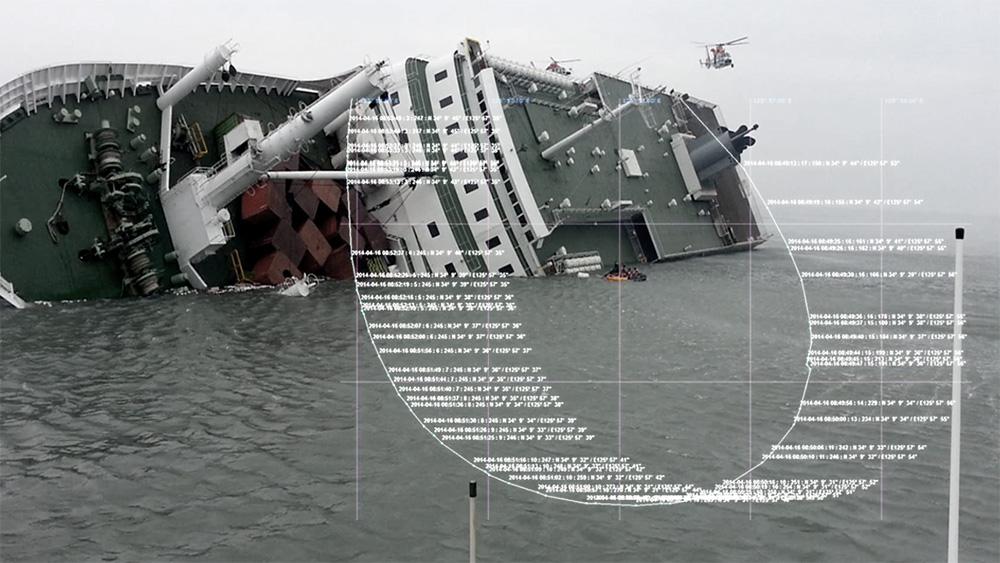
Focal Point of Sewol Ferry Investigation: the Stability of the Vessel
2017년 09월 15일 10시 15분
Of 4 black boxes recovered this time, the Korea Center for Investigative Journalism (KCIJ)-Newstapa has paid a special attention on analyzing the video collected from the Matiz sub-compact car -- because of the gravity sensor (G-sensor) embedded in this particular black box.
A G-sensor inside a vehicle’s black box is engineered to detect every little shock on the auto’s body by monitoring proper acceleration, indicating the degree of shock in numbers.
In this case, the G-sensor numbers can be a crucial piece of information in verifying the main reason of sinking. Some have argued that external shock on the ferry was the leading factor of sliding the hefty cargos and goods, which eventually resulted in sinking.
KCIJ-Newstapa analyzed the G-sensor numbers in an effort to verify if there was a decisive situation like external shocks or an internal explosion, which might had drastically changed the sensor numbers.
The sensor had continuously detected and recorded shocks on the vehicle before and after the vehicle was loaded on the ferry.
At the very bottom of the Matiz vehicle’s black box video clip, three numbers labeled x, y and z are appeared. These live-changing numbers are the degree of shocks, detected by the G-sensor.
The G-sensor expresses how much the black box moves in all directions -- up and down, left and right, and front and back -- due to nearby shocks, in number. The numbers can be measured either in an absolute or a relative value.
Newstapa requested a black box software developer for an analysis on this G-sensor values.
This particular sensor inside the Matiz’s black box is designed to measure in a relative value, the firm explained. It means, the numbers on this video represent the value of shocks in plus or minus by comparing the value a second ago.
The shock value kept changing to create a fluctuation of up to 3, from the moment the Matiz vehicle was loaded on Sewol and on the way to Jeju. Such a minor fluctuation is usually considered to be a result of reflecting trembles of the vessel’s engine or shaking from waves in the middle of ocean.
If there really was a shock huge enough to tilt the ferry and to slide all the cargos to one corner, then there should have been notable fluctuations in the G-sensor values before the cargos actually started moving.
Take a look at the video to grasp what really happened at the moment.
G-sensor values changed merely before cargos started moving
In the Matiz vehicle’s black box video, the very first moment when cargos sliding to move was 8:49:26 a.m.
No drastic changes in the G-sensor value were found in any moment before then.
Newstapa carefully examined the video, paying a special attention on the last 10 seconds before the first moment of cargos moving. The analysis for this interval was carried out very closely by dividing a single second into 30 frames.
The sensor numbers showed a limited amount of fluctuations, hovering near 0 to create a fluctuation up to 3.
Huge fluctuations as drastic as -76 had appeared at the scene, where nearby cars inclined to the left side.
“If there was a shock huge enough to influence to the sinking of a big vessel like the Sewol ferry, then the G-sensor value [in a relative value] should have jumped at least from +10 and -10 range -- even if the vehicle absorbed the shock quite well,” a researcher at the black box software developer, said after analyzing the video.
The analysis led Newstapa end up with a conclusion of high possibility: There was no external shock large enough to result in shifts of cargos.
One of the main controversies on the cause of the sinking of Sewol ferry was about when cargos shifted by losing balance: Whether the cargos’ shift to one side resulted in the ferry list sharply, or an external shock on the ferry triggered a tilt to shift the cargos.
Now, the G-sensor values appeared in the black box videos have proved that an external shock was not the cause of the ferry’s sharp list.
뉴스타파는 권력과 자본의 간섭을 받지 않고 진실만을 보도하기 위해, 광고나 협찬 없이 오직 후원회원들의 회비로만 제작됩니다. 월 1만원 후원으로 더 나은 세상을 만들어주세요.